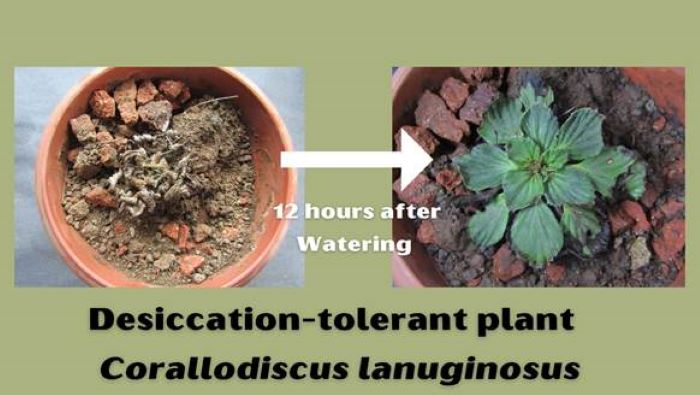Scientists discover 62 desiccation-tolerant vascular plant species in Western Ghats

Team L&M
India’s biodiversity hotspot, the Western Ghats, is home to 62 Desiccation-Tolerant Vascular Plant Species which could have applications in agriculture, particularly in areas with scarcity of water.
Desiccation-tolerant vascular (DT) plants are able to withstand extreme dehydration, losing up to 95 per cent of their water content, but they revive once water is available to them. This unique ability allows them to survive in harsh, arid environments that would be uninhabitable for most other plants. DT plants have been studied for their possible applications in agriculture, particularly in areas with limited water resources. In tropical regions, they are the predominant occupants of rock outcrops.
Although rock outcrops are common landscapes in the Western Ghats, knowledge of DT plants in the region is poor as these have been relatively understudied.
Now, scientists from Agharkar Research Institute (ARI) Pune, an autonomous institute of the Department of Science and Technology (DST), have identified 62 DT species in the Western Ghats, many more than the earlier known nine species.
The research, published in the Nordic Journal of Botany, provides an overview of Indian DT plants, with a special focus on the Western Ghats, and includes an inventory of species with their habitat preferences.
In the inventory of 62 species, 16 are Indian endemic, and 12 are exclusive to the Western Ghats outcrops, highlighting the area’s importance as a global DT hotspot. In addition to rock outcrops, tree trunks in the partially shaded forests were also found to be crucial habitats for DT species, as per the study.
The team of researchers scrutinised outcrop species for their DT properties by seasonal field observations, followed by relative water content estimation protocols. Nine genera of DT plants are reported as new, also in a global perspective, with Tripogon capillatus representing the first record of an epiphytic DT angiosperm. The study also provides the first field observation-based proof of DT properties of the gesneriad Corallodiscus lanuginosus.
The team, led by Dr Mandar Datar, had Smrithy Vijayan, Aboli Kulkarni and Bhushan Shigwan as members. The team collaborated with Dr Stefan Porembski from Rostock University Germany, who is recognised as an expert of tropical rock outcrops.
The findings of the study can provide valuable insights into the biodiversity and ecology of the Western Ghats and aid in the conservation of DT plant species. Besides, understanding the mechanisms by which DT plants can tolerate dehydration could lead to the development of crops that are more drought-resistant and require less water.

